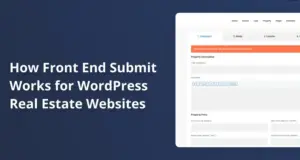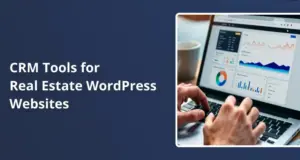Understanding Heatmaps and Their Importance
Hey there, fellow marketers and designers! So, you’ve heard the buzz about heatmaps, right? You might be thinking, “What are these, and why do they matter?” Well, let’s break it down. Heatmaps are those nifty tools that take all the guesswork out of website performance. They’re like Google Analytics, but without all the math. With heatmaps, you can instantly see where users are clicking, scrolling, and even where they’re getting a little lost. That’s right, folks, no more guessing where your shiny button should go.
But seriously, these bad boys are crucial. They provide visual data on user engagement, helping you optimize your layout, increase conversions, and just make your users’ lives a whole lot easier. Whether you’re crafting the perfect landing page or just trying to figure out why no one’s clicking your hero image, heatmaps are your best friend.
Why Heatmaps Matter
- Data-Driven Decisions: They help eliminate guesswork and can help you justify those layout changes.
- User Experience Insights: They highlight areas where users are getting lost, so you can fix those problem spots.
- Conversion Rate Optimization: You’ll get more bang for your buck by strategically placing your CTAs where they matter most.
Types of Heatmaps
Not all heatmaps are created equal. Understanding the different types can help you get the most out of this tool.
1. Movement Maps
What are they?
Movement maps track how users move their mouse across your web page.
Why are they important?
They show where users are paying attention (the hot spots) and where they’re not (the blind spots).
How to use them:
Got a critical piece of information that needs to be seen? Make sure it’s in one of those hot spots. Rearranging your layout based on movement patterns can make a world of difference. Just make sure to A/B test it first!
2. Click Maps
What are they?
Click maps tell you where users are clicking on your webpage.
Why are they important?
If everyone’s clicking on that one image thinking it’s a link, you’ve got some user experience work to do.
How to use them:
Analyze where users are clicking to refine your CTAs and links. Are users clicking on a graphic instead of a button? It might be time for some UI fixes.
3. Scroll Maps
What are they?
Scroll maps show how far down a page users are scrolling.
Why are they important?
They can reveal content that’s being ignored, which isn’t great if that content is important.
How to use them:
If users aren’t scrolling past the fold, consider moving your crucial information higher up. Maybe your lovely 2,000-word blog post can wait until after the user signs up for your newsletter.
Analyzing User Behavior with Session Recordings
Now, let’s take things up a notch. Session recordings are like heatmaps’ cool cousin who’s into video. Watching real-time user interactions is as close as you can get to sitting over their shoulder and asking, “What do you want?” Here’s why they’re important:
- Why Watching Conversions is Key: Sure, you want to know where users are getting stuck, but what about those glorious moments when they’re actually converting? Watching these key interactions gives you the clearest picture of what works.
- Correlate Data Points: Pair this with your heatmap data (like those rage clicks) to really understand the full picture of user frustrations and triumphs.
Leveraging On-page Surveys
Want to take a more proactive approach to understanding your users? On-page surveys are the way to go. These nifty little tools pop up while users are browsing, giving you direct feedback as they’re engaging with your site. It’s like catching them mid-bite and asking, “How’s that tasting?”
Why Use On-page Surveys?
- Direct Feedback: You’ll get actionable insights straight from the horse’s mouth.
- Lead Generation Potential: Surveys can also double as a way to collect leads. Just promise them something good in return.
How to Implement Surveys Effectively
- Craft Clear Questions: Don’t ask them to rate their entire life, just stick to their experience on your site.
- Monitor Responses: Don’t set it and forget it. Keep an eye on the feedback and be ready to act.
Rage Clicks and Their Significance
Ah, rage clicks. Those frustrated double taps that tell you everything you need to know about a user’s experience. When users are clicking furiously in one spot, it usually means they’re expecting an action that isn’t happening. Here’s why identifying these clicks is so important:
- User Frustration Indicators: High levels of rage clicks are like warning lights. They tell you something isn’t working.
- Actionable Insights: Use this data to refine those clickable elements and give your users what they expect.
Setting Up Heatmap Tools
Ready to dive into the world of heatmaps? Here’s a quick how-to on setting up the two big guns: Hotjar and Crazy Egg. These tools are like having a backstage pass to your users’ experience, allowing you to see what they’re really doing when no one’s looking.
Installation Steps:
- Use Google Tag Manager (GTM): GTM is a game-changer for managing scripts across your site.
- Add Heatmap Tool Scripts:
For Hotjar: Copy the provided script into GTM as a new tag for all pages.
For Crazy Egg: Follow similar steps as Hotjar but select Crazy Egg from the tag options. - Verify Installation: After setup, check each tool’s dashboard to confirm data is being captured correctly.
Conclusion
So there you have it! Using heatmaps, session recordings, and on-page surveys can completely transform your website optimization game. By understanding user behavior—whether it’s through movement, clicks, rage clicks, or direct feedback—you’ll make informed decisions that enhance user experience and drive those all-important conversions.
Actionable Steps:
- Start with one heatmapping tool (Hotjar or Crazy Egg) and get comfy with its features.
- Regularly analyze heatmap data alongside session recordings for a full picture of user behavior.
- Don’t just collect data—act on it! Use A/B testing to see how changes based on heatmap data impact user behavior.
By following these steps, you’ll be well on your way to harnessing the power of heatmaps to optimize your website and maybe even impress your boss. So what are you waiting for? Get out there and start mapping!








